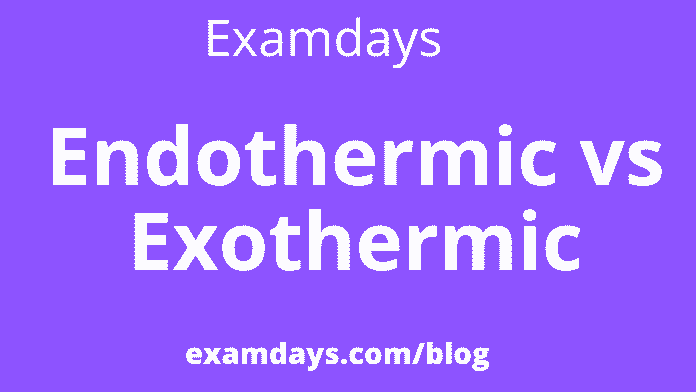Endothermic vs Exothermic: If you are looking for the Endothermic vs Exothermic differences along with chemical reactions. Complete details are available for examination purpose. A chemical process involving an organism that generates warmth (or heat), usually retaining warmth (or heat) or maintaining its temperature, is called an endothermic reaction. An example of an endothermic reaction is a chemical process that works only when heat is retained.
For Endothermic Vs Exothermic, endothermic processes need energy from the surrounding environment, preferably in the form of heat, to occur. Since endothermic processes absorb heat from their surroundings, they cause a slight drop in temperature in their surroundings.
Endothermic Reaction
Endothermic reactions are also non-random since they produce products that have higher energy than the reactants. As a result, the enthalpy adjustment for an endothermic process is always positive.
Endothermic Reaction Equation
Reactants + Energy —> Products
Exothermic Reaction
Exothermic reactions have a negative enthalpy change because the higher energy of the reactants is subtracted from the lower energy of the products. Exothermic reactions are wasteful because it is difficult to capture the released energy. Nature affects combustion reactions under highly controlled conditions, avoiding fires and explosions.
The thermite reaction is exothermic in which the overall standard enthalpy change h is negative. The reaction releases sufficient heat to yield molten iron.
Endothermic Reaction Equation
Reactants → Products + energy
Difference Between Endothermic and Exothermic Reactions
| Endothermic Reaction | Exothermic Reaction |
| Chemical reactions in which the reactants consume heat energy from the surroundings to form products are called Endothermic reactions. | Exothermic reactions in which release energy in the form of light or heat. |
| The surrounding entropy decreases (ΔS < 0). | The surrounding entropy increases (ΔS>0). |
| Energy is consumed from the surroundings into the reactant. | Energy is released to its environment from the system. |
| Energy is released in the form of heat. | Energy is released through heat, electricity, light, or sound. |
| Enthalpy change (ΔH) is positive | Enthalpy change (ΔH) is negative |
| Some examples are ice melting, evaporation, cooking, gas molecules, and photosynthesis. | Some examples are corrosion, settling, chemical bonds, explosions, and nuclear fission. |
Example of endothermic reactions
Melting of ice: Ice absorbs heat from its surroundings and turns into liquid water. Evaporation of liquid water, forming water vapor, is an example.
- The baking of bread.
Decomposition of Calcium Carbonate: When limestone is heated above 900 ºC, it rapidly decomposes into lime releasing carbon dioxide.
CaCO3(limestone)------------> CaO(quick lime) + CO2
Silver chloride turns gray when exposed to sunlight. Due to the decomposition of silver chloride into silver and chlorine
2AgCl ---------------->2Ag+Cl2
Examples of exothermic reactions
- Calcium oxide reacts violently with water, releasing large amounts of heat to produce slaked lime (calcium hydroxide) used in whitewashing.
- Combustion of natural gas: When methane reacts with oxygen, it releases large amounts of heat, carbon monoxide, and water.
- CH4+2O2—–>CO2+H2O
- Respiration: Food is sliced into simpler substances during digestion. For example, rice or potatoes, or bread contains carbohydrates. Carbohydrates are broken down to form glucose. This glucose provides energy along with oxygen in the cells of our body. This reaction is respiration.
- Making of an Ice Cube.
- Burning of Sugar.
- Rusting of Iron.
Conclusion
The words ‘endo’ and ‘exo’ have Greek roots meaning ‘inside’ and ‘outside’. Likely the names suggest, the main difference between endothermic and exothermic reactions absorbs heat from the surroundings while the latter releases heat.
Examdays Article Agenda

